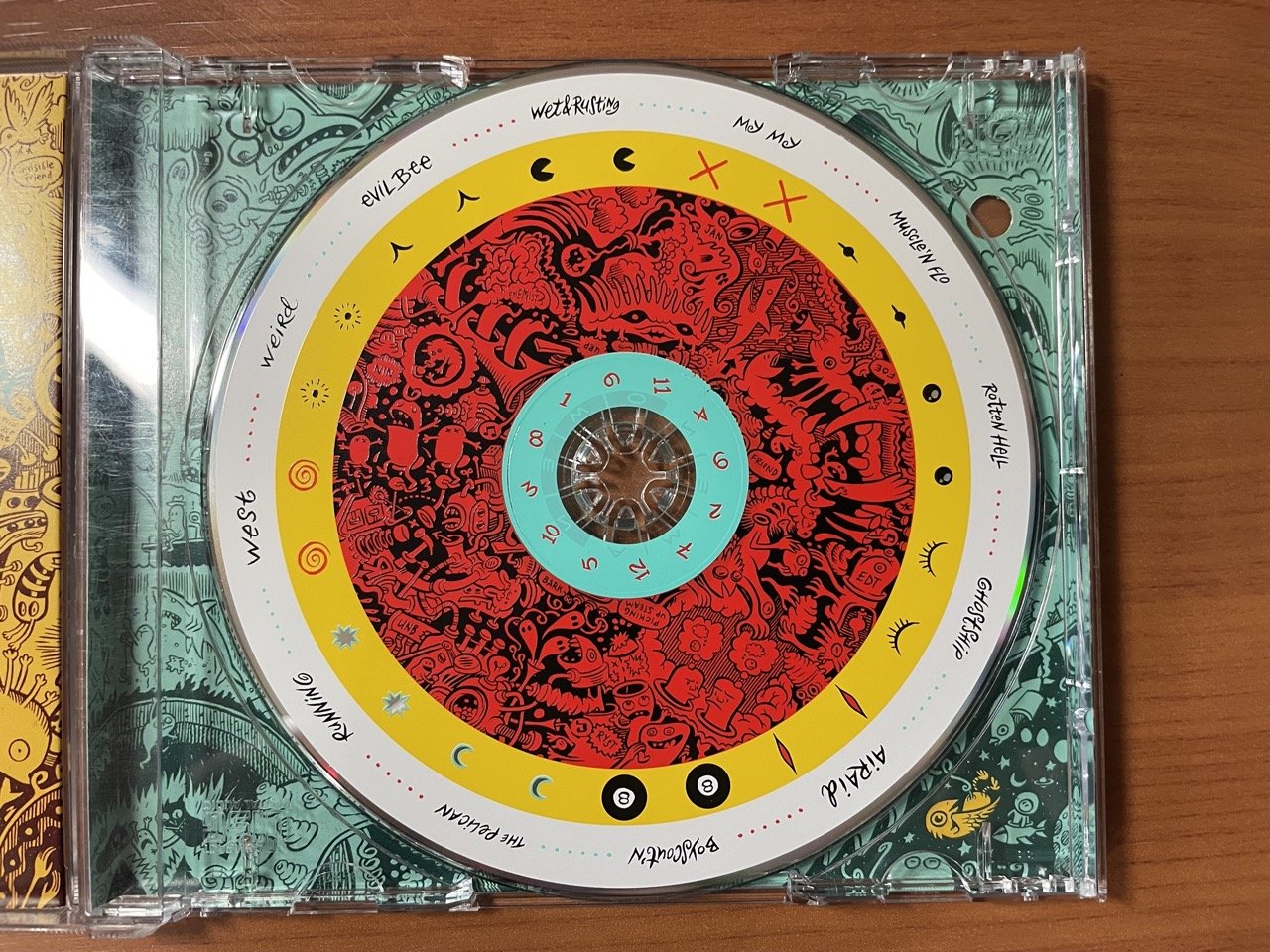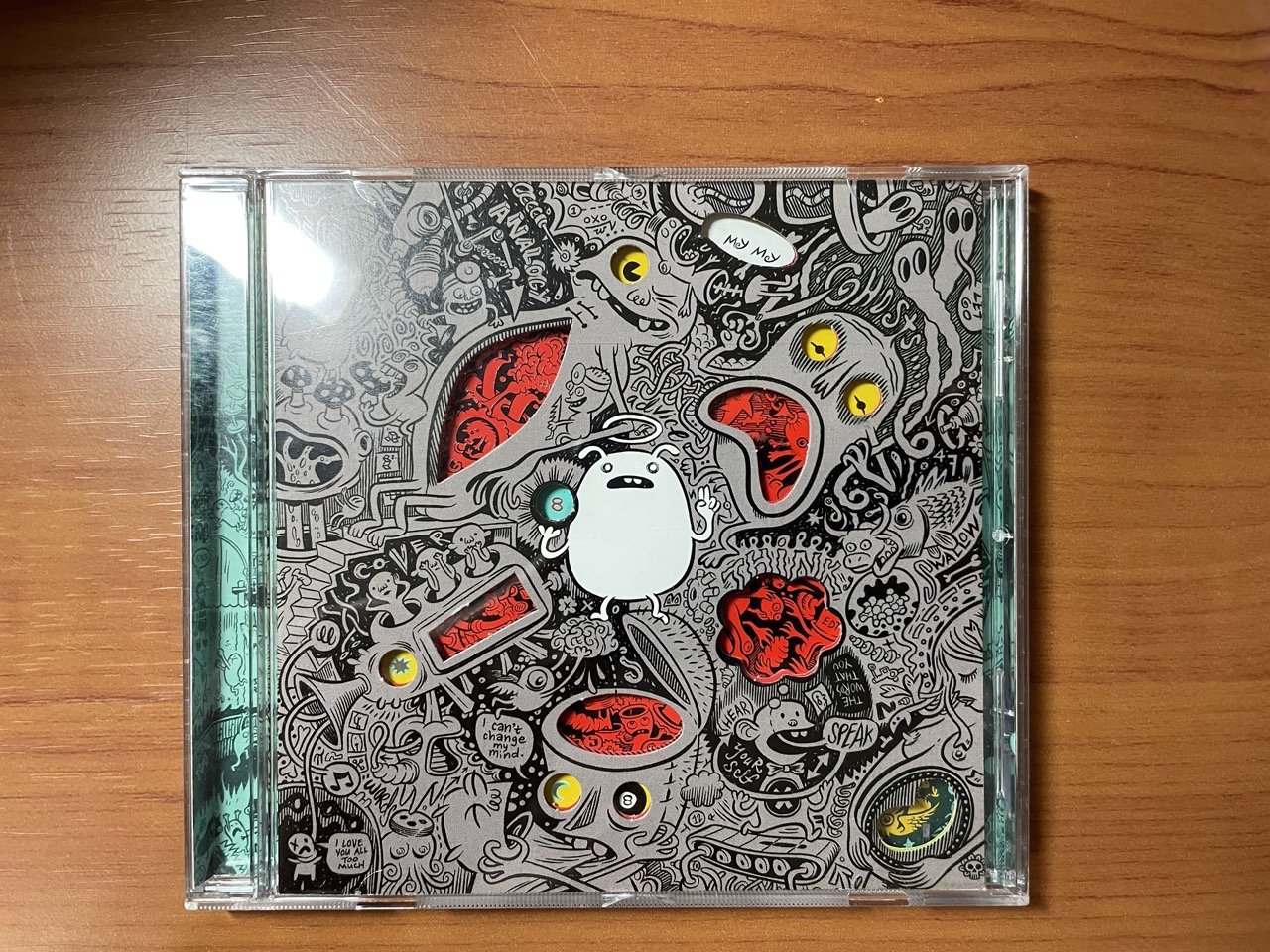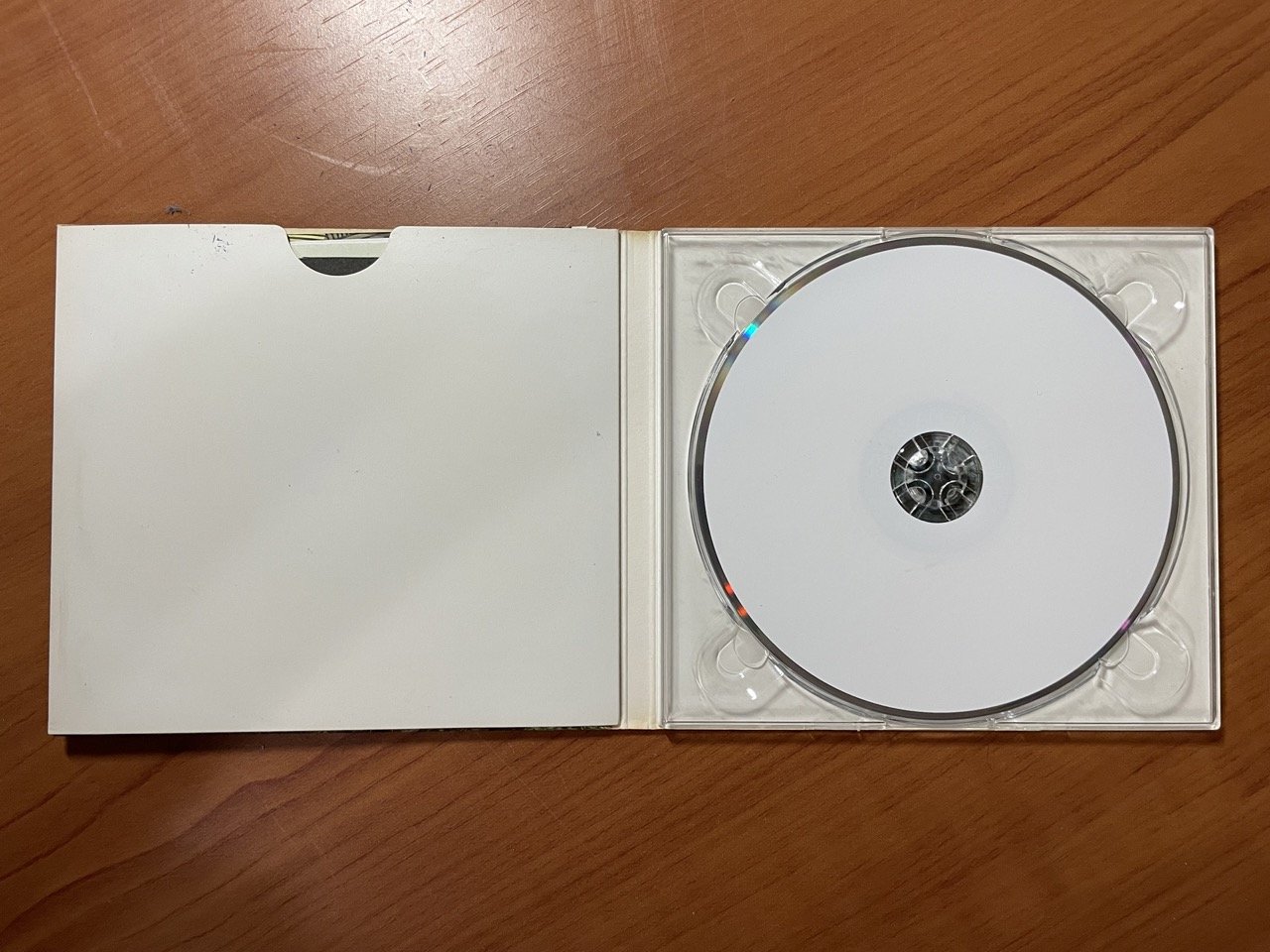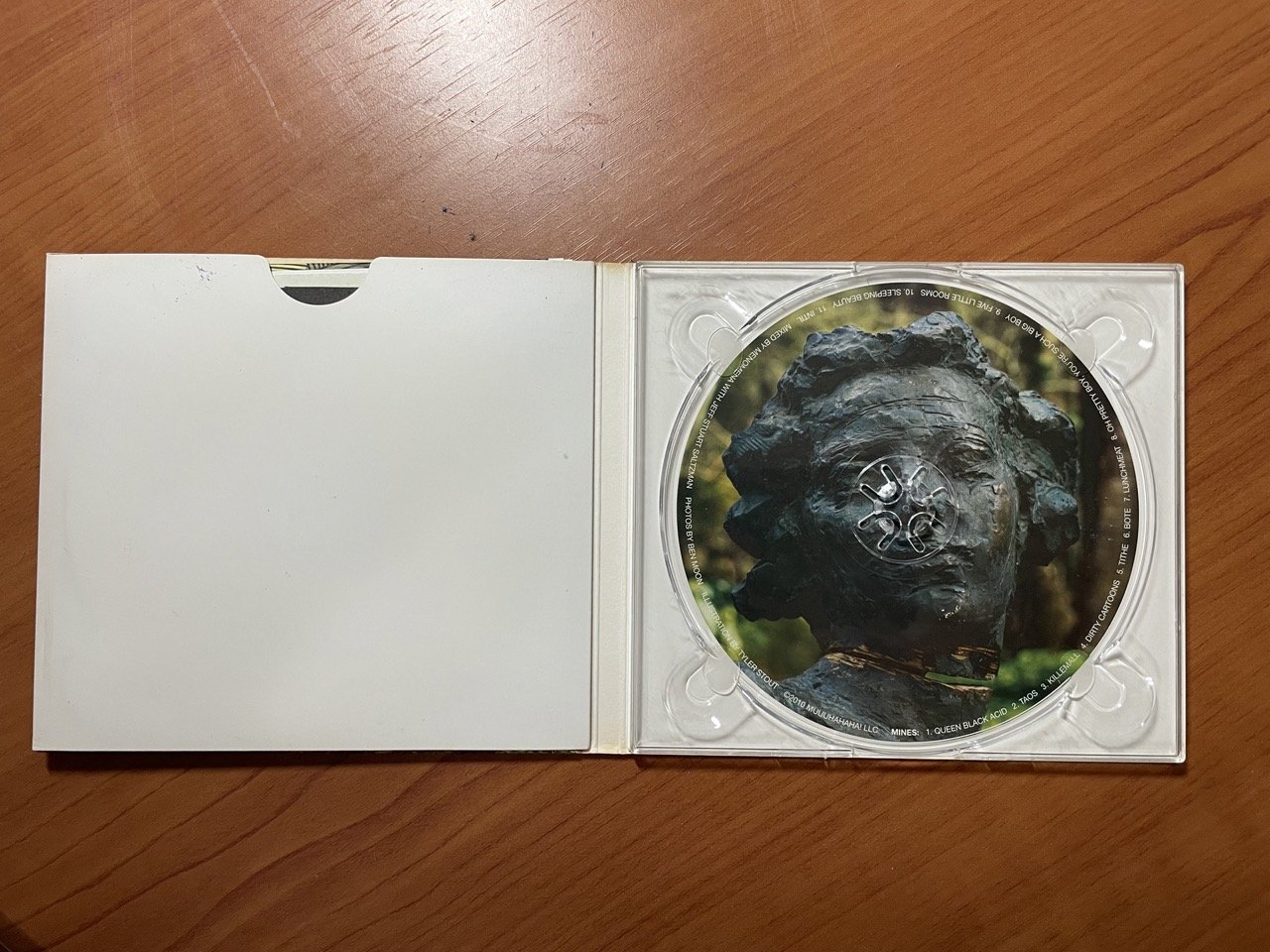Editor's Letter: How Do You Think Sam Goody Felt? (August 2024)
Header photo by Sean Collier, depicting one of the two remaining Sam Goody stores in the USA (located in Pittsburgh). People used to buy CDs there. Check out his article in Pittsburgh Magazine here.
There’s so much more left to do
But I’m not young, but I’m not through
Ever heard of Menomena? Those lyrics come from “Muscle’n Flo,” the first track off their 2007 album Friend and Foe. I happened upon it last month and subsequently bought all four of their mainline albums on CD. Coincidentally, just this month they played their first shows in a very long time. (Their last album, Moms, came out twelve years ago.) I’ll add that their CDs are quite cool: the disk for I Am the Fun Blame Monster! comes in a flipbook, Friend and Foe’s disk art has an out-of-order tracklist that can only be sequenced using the die-cut front cover as a cipher, and Mines’ digipak gatefold has no visible text until you take out the CD. I’ve put some pictures in for your viewing pleasure.





Anyways: last month, SPIN Magazine published the saddest piece of music journalism I think I’ve ever read. The article, titled MUSIC CRITICS SUCK!, sees recurring SPIN contributor and Web3 guy Les Borsai having a tantrum about how “centralized media” is bad since they ragged on the new Eminem album a lot. Highlights from the article include stating that Pitchfork’s highest possible grade is a 9.9, leveling a ‘gotcha’ at Rolling Stone columnist Rob Sheffield for giving Eminem the attention he wants (by writing a review???), and essentially calling Gen Z the Pronoun Generation without considering why our elders may not have wanted to come out.
Seriously, man? (Source: SPIN)
My biggest takeaway from Borsai’s article, however, is that he’s overcomplicating the situation. We are having big musical moments this year, if Charli XCX and Kendrick Lamar have proven anything, but those moments don’t really happen the way Borsai thinks. Twenty years ago, you may have been pulling up Rolling Stone or Pitchfork to decide which ten-dollar album you wanted to load onto your iPod that Tuesday. The iTunes Store, where you’d buy said albums, was always kept up-to-date by real people who were also dialed in to what’s fresh. Now you can stream your collection on Spotify, where the CEO earns more money than any artist on the platform ever did, for eleven-something dollars a month. If you ask most people, you’ll find that they discover more music through Spotify’s AI DJ than they do from any human curator — algorithms just work faster. Eminem secured his legacy long before the end of the iTunes era, and he can embarrass himself on record as much as he wants now. If you were already a Marshall Mathers stan, then you’ve probably heard The Death of Slim Shady. If not, then it’s come and gone. This is normal. Borsai doesn’t need Rob Sheffield to calm the lizard part of his brain by writing a glowing review for Rolling Stone. We just don’t have that level of monoculture anymore, and it baffles me that the over-40-year-running SPIN decided that this rant was fit to publish.
Now, Aural Wes has long outlived the iPod. Anna Wiener ‘09 started this blasted thing 17 years ago now; soon it’ll be as old as the people in charge of it. As such, we keep a lot of ghosts here: deep within the artist pages of this website lay many dormant Myspace profiles, broken links, and low-res photos of old bands playing in places that Wesleyan has long since torn out. Remnants of Wesleyan’s old blogosphere still floated around campus for a time, but they disappeared when the COVID-19 pandemic began. Let’s look at Method Magazine, a student arts & music outlet that went away before my arrival in 2021: if you look at the Wayback Machine, their staff published so much Stuff (yes, with a capital S) that I don’t know how much time it would take me to sift through what’s readily accessible. Then, everyone graduated and no one picked up the reins. Today Method’s existence is marked on campus by a single sticker on the Clark Hall ground floor, which somehow still looks new. I don’t have a picture, but it’s there if you go looking for it. I think it’s on one of the exit doors.
Front page of Method Magazine’s website, as recorded on the Wayback Machine on March 21, 2018
Method went offline in 2019, so it’s not really a COVID casualty, but the lockdown year definitely sent it off the bottom rung of institutional memory — forgotten by all except those who really like diving into The Argus’ and AW’s archives, or those who have the patience to navigate the Wayback Machine’s memories of Wesleying 1.0. (Shoutout to the people who got Wesleying back up and running, by the way — check out the new site)
Student cultures live and die by virtue of those who are stubborn enough to overthink them. We, too, should have succumbed to the COVID lockdown wave. The rest of Wesleyan’s blog culture did just that—hell, our predecessors lost the website for a bit in 2021—but goddamn it, we’re still here. For all that we’ve done here, and for everything we intend to preserve, we’d like to keep it that way.
I’m entering my senior year at Wesleyan, and I’m wondering how the old Method editors felt. There’s still a whole year ahead of me, but I’m running out of time as chief editor here. There’s so much more left to do with AW, but realistically, I will not be done before I put on that red cap that will probably be too large for my head. Yet as time passes, beyond the end of monoculture, Wesleyan’s students will always have a tightly knit music scene. It’s up to us to document it to the best of our ability.
Until any of that kicks up again, though, I think that Menomena song is gonna mark a good start to the year. They know a thing or two about getting old.
Fixing Thigns [sic]
I’m working on getting older published articles up to date. It may be surprising, but when your blog goes through multiple redesigns, its older articles may start looking not so great. By exploring the archive you may also find a lot of things you may not have thought about before, namely:
Many, many links are broken on the old posts. YouTube videos get copyright protected or removed, SoundCloud links no longer exist, et cetera. It surprises me how often people used SoundCloud embeds back then; nowadays most student artists just use DistroKid to get their stuff on paid streaming services.
The old editors had guidelines for how blog posts were tagged here, but there aren’t anymore. We have to tag a good hundred blog posts in order for them to show up in Search properly.
Squarespace didn’t seem to have Embed blocks until the late 2010’s, so editors would use either the Video or Code blocks to embed YouTube and SoundCloud links. These embeds would not auto-adjust to the width of the text window, apparently, so editors would have to manually input the size that they wanted the embed to be.
Artist names and track titles in the old Weekly Track Roundups were prone to misspelling. In Songs to Die To, Nine Inch Nails was written as “Nine Inch Hails.”
Sometimes I’ll find an artist bio with this massive text break in between a word or sentence. If I opened one of these pages in Edit Mode, a line of text reading something like “texts to get ur ex back bb” would suddenly appear. The text is hyperlinked to the domain getexbb.com, which I’m not sure was ever a website. I have seen this in multiple artist bio pages so far, and the text itself is slightly different each time.
On Featherwood Bee’s old bio, which is now hidden, a member wrote in his phone number hoping that a girl would reach out to him. This was obviously a joke. I do wonder if any stories came of it, though.
That’s as much as I’ve found interesting so far, but there’s a lot more. There has to be. If there’s anything QoL-related that you want to see on our website, however, scroll down for our contact info.
Alumni: Help Wanted
I’ve got some goals for AW this year, if that’s not already obvious, but one thing I’d like to do is re-publish stuff from the Wesleyan arts & music blogs that fell by the wayside. I’m trying to get something together for Greyscale — shoutout to Kelsey Gordon ‘18 for the tip, and to Alex Lee ‘17 for helping me out so far — but if you have any leads regarding Method or some other dead blog that we don’t know about, please reach out to us. You can contact AW through the team email teamauralwes@gmail.com, via myself at mdlevin@wesleyan.edu, or by DM on our social platforms (all @auralwes, though we’re most responsive on Instagram.)
August’s Jams
Every month on the Aural Wes Spotify account, we make a new collaborative playlist with all the stuff we’re enjoying at the present moment. This past-ish August we put on newer tunes from Liv.e, Clairo, Porter Robinson, and our own Tiz (Emmett Favreau ‘26) and Nolan Lewis ‘25; we also have classic house from Larry Heard, overlooked 00’s indie rock by The American Analog Set, that Menomena song I mentioned, and a fair bit more. Check it out below!
Artwork for Friend and Foe by Craig Thompson.
Photography for Mines by Ben Moon.






